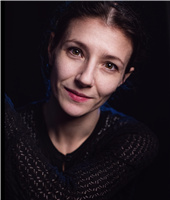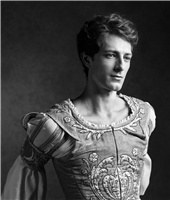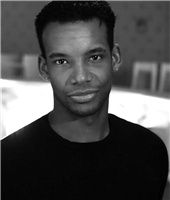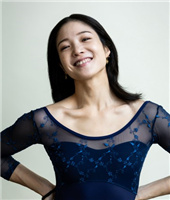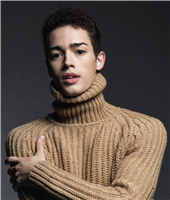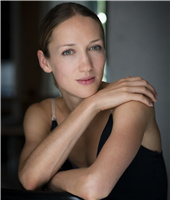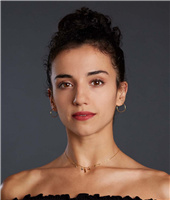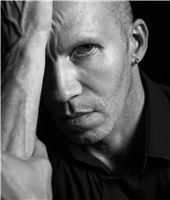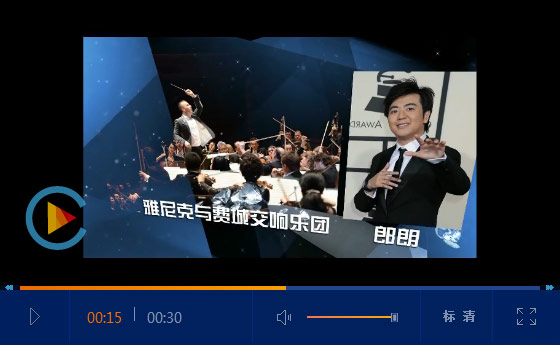Le Corsaire Pas de Deux
Dancers: Madoko Sugai, Osiel Guneo
Choreographer: Marius Petipa
Music: Riccardo Drigo
The pas de deux from Le Corsaire is one of the ballet’s most celebrated excerpts. Premiered in 1856 and inspired by Byron’s narrative poem, the version most widely performed today was choreographed by the great 19th-century Russian master Marius Petipa, distilled from his many revisions of the full work. With its lively tempo, the male dancer displays strength through soaring leaps and lifts, while the ballerina embodies elegance through fluid lines and dazzling turns. This classic pas de deux perfectly unites technical brilliance with expressive artistry.
Clay and Diamonds
Dancers: Ksenia Ovsyanick, David Motta-Soares
Choreographer: George Williamson
Music: Elisa Irini Vidalis
In this duet, choreographer George Williamson weaves grounded, sculptural movement with passages of fluid lyricism, guiding the dancers through shifts between strength and delicacy, openness and endurance. Set to an evocative score by Elisa Irini Vidalis, the work moves between weight and lightness, tracing a journey from the elemental to the extraordinary.
ABC
Dancer: Johan Kobborg
Choreographer: Eric Gauthier
Music: Eric Gauthier
ABC is one of choreographer Eric Gauthier’s most successful and renowned works—a witty yet thought-provoking miniature of contemporary ballet. Originally created on and with Johan Kobborg, the solo is inspired by the idea of a “dance alphabet”.
The piece strings together the complexities of ballet terminology from A to Z, weaving them into a playful portrait of dancers’ lives through exaggeration, humour, and irony. Blending high-level technique with everyday physical expression, the choreography is both technically demanding and theatrically engaging, ABC stands as a humourous tribute to both dancers and audiences alike.
Spartacus Pas de Deux
Dancers: Bianca Teixeira, Adamzhan Bahtiyar
Choreographer: Yuri Grigorovich
Music: Aram Khachaturian
The pas de deux from Spartacus comes from the ballet of the same name, composed in 1956 by Soviet composer Aram Khachaturian. First choreographed by Leonid Yakobson, it was later reimagined by Yuri Grigorovich in 1968 for the Bolshoi Theatre, whose version became the definitive classic. This duet captures the heartfelt gaze between Spartacus and his wife Phrygia, making it one of the most emotionally powerful moments of the entire work. Set to music both solemn and stirring, the choreography is expansive and grand, highlighted by breathtakingly difficult lifts. It stands as a quintessential example of the heroic narrative style of Soviet ballet.
Cafe-ína (World Premiere)
Dancer: Madoko Sugai
Choreography: Gabriel Barbosa
Music: Fanfare Ciocărlia
Café-ina, choreographed by Gabriel Barbosa, is a solo bursting with speed and intensity. Driven by the wild rhythms of its music, the piece unfolds like a physical journey ignited by a jolt of caffeine. Set to the vibrant brass sounds of Romania’s “Lăutarii” ensemble and interwoven with the lyricism of Chopin, the choreography combines playful wit with unrestrained power, demanding exceptional control and dramatic presence from the dancer. A true explosion of energy for both the eyes and ears, Café-ina propels the body forward in relentless rhythm, echoing the rapid pace of modern life.
Diamonds Pas de Deux from Jewels
Dancers: Alina Cojocaru, Mathieu Ganio
Choreographer: George Balanchine
Music: Peter Ilyitch Tchaikovsky
The performance of the pas de deux from Diamonds, a Balanchine Ballet, is presented by arrangement with The George Balanchine Trust and has been produced in accordance with the Balanchine Style and Balanchine Technique Service standards established and provided by the Trust.
The Diamonds Pas de Deux is taken from George Balanchine’s three-act abstract ballet Jewels, which premiered in 1967. Set to Tchaikovsky’s Symphony No. 3, Diamonds pays homage to the grandeur of the Russian classical ballet tradition. The duet is noble and stately, marked by strict structure, symmetry, and refined lines, evoking the purity and brilliance of a diamond. Both dancers must execute seemingly weightless movements with utmost control, highlighting the nobility and clarity of classical technique. This pas de deux also embodies the essence of Balanchine’s neoclassical vision—stripped-down form, primacy of music, and a focus on the structural beauty of dance—making it one of the defining works of the neoclassical ballet style.
——Intermission——
Two
Dancer: Alina Cojocaru
Choreography: Russell Maliphant
Music: Andy Cowton
Two is an iconic work created in 1997 by British choreographer Russell Maliphant for former Royal Ballet dancer Dana Fouras. The piece is renowned for its innovative use of light and space, blending ballet, contemporary dance, and movements inspired by martial arts. The ballerina performs within a “light box” on stage, designed by Michael Hulls, her movements intricately interwoven with shifting beams of light. Set to a tension-filled score by Andy Cowton, the work highlights fluid classical lines, expressive physicality, and the dynamic interplay of body and environment. Through rising and spiraling motions, the dancer radiates both agility and strength, culminating in a breathtaking image as golden light streams from her outstretched hands.
Black Swan Pas de Deux from Swan Lake
Dancers: Ksenia, Ovsyanick, Osiel Guneo
Choreographer: Marius Petipa
Music: Peter Ilyitch Tchaikovsky
Taken from the ballet Swan Lake, the Black Swan Pas de Deux is one of the most dramatic and tension-filled climaxes of the work. Created by Marius Petipa and Lev Ivanov in their 1895 St. Petersburg production for the Mariinsky Theatre, it remains a hallmark of classical ballet. Centered on the Black Swan’s cunning seduction and the Prince’s fervent pursuit, the duet is built on striking contrasts. Its structure—entrée, adagio, male variation, female variation, and coda—is especially renowned for the ballerina’s 32 fouettés. Demanding both virtuosity and emotional intensity, this pas de deux is a supreme test of a dancer’s artistry and technique.
White Crow (World Premiere)
Dancer: David Motta-Soares
Choreographer: Johan Kobborg
Music: Ilan Eshkeri, Peter Ilyitch Tchaikovsky
A tribute to Rudolf Nureyev, inspired by his boundless desire, fervent passion, and insatiable curiosity. Evolved from Johan Kobborg’s work on the feature film The White Crow, the solo uses music from the original motion picture soundtrack, composed by Ilan Eshkeri and Pyotr Ilyich Tchaikovsky.
Diana & Acteon Pas de Deux
Dancers: Bianca Teixeira, Adamzhan Bahtiyar
Choreographer: Marius Petipa
Music: Riccardo Drigo
The Diana and Actaeon Pas de Deux is a dazzling showpiece often featured in classical ballet galas, portraying the legendary bond between the moon goddess Diana and the hunter Actaeon. Created in the early 20th century by Russian ballet pedagogue Agrippina Vaganova, the duet is structured with clarity and designed to highlight the dancers’ virtuosity—strength, control, leaps, and turns. The ballerina, often entering with a quiver in hand, embodies both grace and power, while the male dancer impresses with bravura jumps and athletic prowess. With its high level of technical demand and pure classical style, this pas de deux has become a true ballet classic.
Lady of the Camellias Black Pas de Deux
Dancers: Alina Cojocaru, Mathieu Ganio
Choreographer: John Neumeier
Music: Frédéric Chopin
The Black Pas de Deux from The Lady of the Camellias is drawn from John Neumeier’s 1978 ballet for the Hamburg Ballet, adapted from Alexandre Dumas fils’ famous novel and set to the piano music of Chopin. Stark in tone and charged with tension, this duet brims with struggle and confrontation, portraying the turbulent emotions and entangled relationship between Marguerite and Armand. The Black Pas de Deux reflects Neumeier’s hallmark style of dramatic conflict and emotional depth, using the dancers’ physical language to expose the characters’ inner lives. It transforms ballet into a medium where narrative and emotion are tightly interwoven, endowing the stage with powerful theatrical intensity.
Grand Finale / Defile
Dancers: All artists
The above information, including performance times, lineups, programmes and ticket prices, are all subject to change without prior notice and for reference only.





